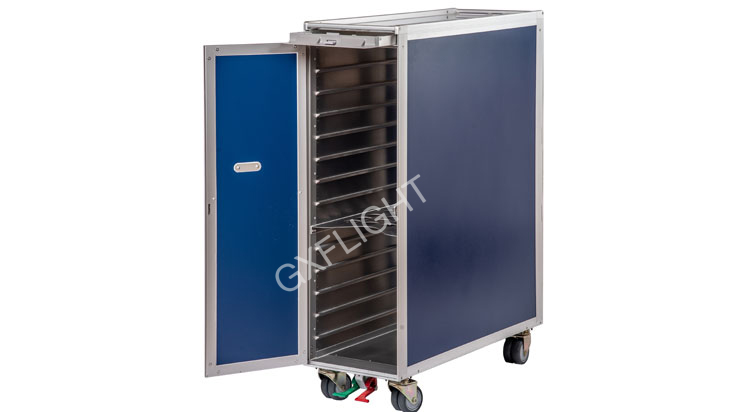
Airline trolley, also known as an airline catering trolley or airline service trolley, is one of the essential pieces of equipment on an airplane. They are not only the core tools for in-flight service but also play a crucial role in airline operations. This article will explore the history, design standards, and importance of airline trollys in modern aviation services.
The usage of airline trolleys started in the late 20th century 60s, when the introduction of large wide-body aircraft significantly increased passenger numbers. The traditional method of manually delivering food and beverages could no longer meet the demands of many passengers. To improve service efficiency, airlines introduced the airline trolley system. These trolleys were designed to efficiently transport drinks, meals, and other items on the aircraft.
The early trolley systems were inspired by long-haul railway seat services, with similar service trolleys also being adopted in the aviation sector. The introduction of airline trolleys not only solved the problem of high passenger flow but also enhanced the overall passenger flying experience.
Modern airline trolleys usually come in two sizes, including full-size and half-size. To meet the various needs of different airlines, the trolleys' designs come in several standard series. Here are some common design standards:
ACE series
Mainly used by British airlines, with specifications originating from Driessen manufacturers.
ATLAS series
This is the most common trolley standard, used by about 80% of airlines. The ATLAS series is named after the airlines that initially proposed this specification, including Alitalia, Air France, Lufthansa, and others.
KSSU series
Named after airlines such as KLM, Swissair, SAS, and United Airlines; Cathay Pacific also uses this series.
These airline trolleys feature sturdy box-like structures and are equipped with braked casters to ensure trolley stability on the aircraft. The front and rear door and top handle designs make cabin crew service more convenient and efficient.
Despite the standardized design series, many airlines typically customize existing airline trolleys to meet their specific needs. This customization not only enhances service efficiency but also better meets passenger needs. For example, some airlines might add extra storage space or adjust the internal layout of the trolleys to accommodate different types of meals and drinks.
In conclusion, airline trolleys play a crucial role in modern aviation services. Their designs and functionalities are continuously optimized to enhance the passenger experience during flights. Whether full-size or half-size, airline trolleys provide convenient and efficient service solutions on aircraft, making them indispensable equipment for every flight.